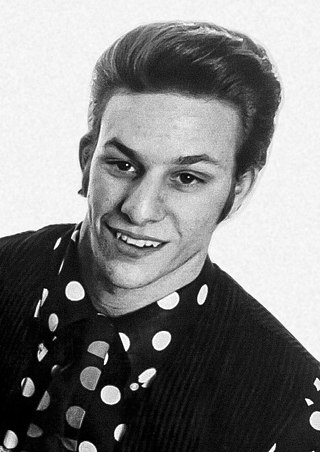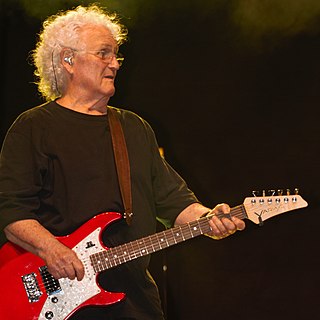Related Research Articles

Jefferson Airplane was an American rock band based in San Francisco, California, that became one of the pioneering bands of psychedelic rock. Formed in 1965, the group defined the San Francisco Sound and was the first from the Bay Area to achieve international commercial success. They headlined the Monterey Pop Festival (1967), Woodstock (1969), Altamont Free Concert (1969), and the first Isle of Wight Festival (1968) in England. Their 1967 breakout album Surrealistic Pillow was one of the most significant recordings of the Summer of Love. Two songs from that album, "Somebody to Love" and "White Rabbit", are among Rolling Stone's "500 Greatest Songs of All Time".

Quicksilver Messenger Service is an American psychedelic rock band formed in 1965 in San Francisco. The band achieved wide popularity in the San Francisco Bay Area and, through their recordings, with psychedelic rock enthusiasts around the globe, and several of their albums ranked in the Top 30 of the Billboard Pop charts. They were part of the new wave of album-oriented bands, achieving renown and popularity despite a lack of success with their singles. Though not as commercially successful as contemporaries Jefferson Airplane and the Grateful Dead, Quicksilver was integral to the beginnings of their genre. With their jazz and classical influences and a strong folk background, the band attempted to create an individual, innovative sound. Music historian Colin Larkin wrote: "Of all the bands that came out of the San Francisco area during the late '60s, Quicksilver typified most of the style, attitude and sound of that era."

Wally Heider Studios was a recording studio founded in San Francisco in 1969 by recording engineer and studio owner Wally Heider. Between 1969 and 1980, numerous notable artists recorded at the studios, including Creedence Clearwater Revival, Jefferson Airplane, Crosby, Stills, Nash & Young, and The Grateful Dead. The studio changed ownership in 1980 and was renamed Hyde Street Studios, which is still in operation today.

Winterland Ballroom was an ice skating rink and music venue in San Francisco, California, United States. The arena was located at the corner of Post Street and Steiner Street. It was converted for exclusive use as a music venue in 1971 by concert promoter Bill Graham and became a popular performance location for many rock acts. Graham later formed a merchandising company called Winterland Productions, which sold concert shirts, memorabilia, and official sports team merchandise.

Greg Errico is an American musician and record producer, best known as the drummer for the popular and influential psychedelic soul/funk band Sly and the Family Stone.

Alembic is an American manufacturer of high-end electric basses, guitars and preamps. Founded in 1969, the company began manufacturing pre-amps before building complete instruments.

Aoxomoxoa is the third studio album by the Grateful Dead. It was one of the first rock albums to be recorded using 16-track technology. The title is a meaningless palindrome, usually pronounced.
Long John Silver is the seventh studio album by the American rock band Jefferson Airplane, and their last album of all new material until 1989. It was recorded and released in 1972 as Grunt FTR-1007.
Herb “Herbie” Greene is an American photographer known for his portraits of musicians and bands from San Francisco's counterculture in the 1960s and 1970s. Many of his images were published by Rolling Stone, by record labels, and in books. Greene's photographed subjects include the Grateful Dead, Janis Joplin, Grace Slick, Led Zeppelin, Rod Stewart, Jeff Beck, The Pointer Sisters, Carlos Santana, and Sly Stone.
Autumn Records was a 1960s San Francisco–based pop record label. Among the notable acts on its roster was The Beau Brummels, a band who released a pair of top 20 singles, "Laugh, Laugh" and "Just a Little".
Michael Ray Wilhelm was an American guitarist, singer and songwriter, best known as a founding member of the influential Bay Area band the Charlatans, who have been widely credited as starting the Haight-Ashbury psychedelic scene during the 1960s. He later played with the bands Loose Gravel and the Flamin' Groovies.
Wally Heider was an American recording engineer and recording studio owner who refined and advanced the art of studio and remote recording and was instrumental in recording the San Francisco Sound in the late 1960s and early 1970s, recording notable acts including Jefferson Airplane, Crosby, Stills, Nash & Young, Van Morrison, the Grateful Dead, Creedence Clearwater Revival, and Santana.
Dan Healy is an audio engineer who often worked with the American rock band the Grateful Dead. He succeeded Alembic and Owsley "Bear" Stanley as the group's chief sound man after the Wall Of Sound in 1974 and subsequent band hiatus through 1975. A favorite amongst Deadheads for many years, he helped to introduce a tapers section at Grateful Dead concert to allow audience recording of live concerts. Healy would often provide direct output from the soundboard for the tapers to directly patch into their recorders.
The Planet Earth Rock and Roll Orchestra (PERRO) is a nickname given to some artists who recorded together in the early 1970s. They were predominantly members of Jefferson Airplane, the Grateful Dead, Quicksilver Messenger Service, and Crosby, Stills, Nash & Young. Their first album together was for Paul Kantner/Jefferson Starship's Blows Against the Empire.

Jefferson's Tree of Liberty is the tenth album by Jefferson Starship, released on September 2, 2008. It is the band's first studio album since 1999's Windows of Heaven. The new album includes cover songs from Irish, American, English, and Latin-American traditions. The title is a reference to Thomas Jefferson's quotation, "The tree of liberty must be refreshed from time to time with the blood of patriots and tyrants." The idea began in 2003 as "The Cuba Project", which was to include classic protest and folk songs recorded in Cuba. In 2008 the album was finally recorded but in California. About half of the songs planned for The Cuba Project were used on the final cut, with other songs coming from Jefferson Starship's previous repertoire and another project band member Paul Kantner had planned called "On the Threshold of Fire." The promotional tour for the album began in late June with shows at Larkspur, California followed by tours in the US and Europe before the album's release, and continued through December 2008 with a further tour in the US and a tour in Japan. On February 1, 2009, more tour dates and venues were announced by the band's manager Michael Gaiman, with additional plans to continue the tour through 2010 and bring it to Australia and South America. David Grisman joined the band for the April 2009 tour dates. The band's promotion for the album ended in June 2009 as the band changed their set-list to Jefferson Airplane's Woodstock Festival material and started touring with the "Heroes of Woodstock" through the end of October.

The Charlatans is the self-titled debut album by the San Francisco psychedelic rock band the Charlatans, and was released by Philips Records in 1969.

David Freiberg is an American musician best known for contributing vocals, keyboards, electric bass, rhythm guitar, viola and percussion as a member of Quicksilver Messenger Service, Jefferson Airplane, and Jefferson Starship. Among other tracks, he co-wrote "Jane", a hit for Jefferson Starship.
Leo De Gar Kulka was a Czech-born American record producer, recording engineer and educator. Starting in Los Angeles at Autumn Records in the 1960s, he later founded the San Francisco studio Golden State Recorders, trade school College for Recording Arts and audiophile record label Sonic Arts. Kulka is considered a pioneer in the modern recording industry.
Golden State Recorders was a San Francisco recording studio owned by Leo De Gar Kulka. Some of the albums recorded at the studio were Brewer & Shipley's second album Weeds in 1969, sessions for The Beau Brummels originally recorded between 1964-1966 and released as San Fran Sessions in 1996, and The Grateful Dead's Birth of the Dead, recorded in 1965 and released in 2003.
Pacific Recorders was an independent recording studio in San Mateo, California. Founded in 1968, the studio was the location for recordings by such notable artists as Santana, the Grateful Dead, The Doobie Brothers, Moby Grape, and Taj Majal.
References
- 1 2 3 4 5 "Pacific High Recording, Alembic, His Master's Wheels, 60 Brady Street, San Francisco, CA". Jerry's Brokendown Palaces. 7 May 2012. Retrieved 30 August 2022.
- 1 2 Jackson, Blair (1 November 2004). "Out of the Ashes, Into the '60s". mixonline.com. Future plc. Retrieved 3 August 2022.
- 1 2 Jackson, Blair (2006). Grateful Dead Gear: The Band's Instruments, Sound Systems, and Recording Sessions from 1965 to 1995. San Francisco, United States: Backbeat Books. ISBN 978-0-87930-893-3.
- 1 2 Lehman, Godfrey (30 November 1968). "San Francisco in Studio Rampage". Billboard. Billboard. Retrieved 11 May 2022.
- ↑ "McCune Studios Open on Coast" (PDF). Billboard. Billboard. 9 November 1968. Retrieved 30 June 2022.
- ↑ Miller, Jason (19 May 2011). "Yes, That Was Recorded In San Francisco: Sly & the Family Stone- Stand!". thevinyldistrict.com. Retrieved 30 August 2022.
- 1 2 3 4 5 "Pacific High Studios Discography". deaddisc.com. Retrieved 30 August 2022.
- 1 2 Selvin, Joel (1996). San Francisco: The Musical History Tour: A Guide to Over 200 of the Bay Area's Most Memorable Music Sites. San Francisco, United States: Chronicle Books. ISBN 0-8118-1007-0.
- ↑ Ruhlmann, William. "Blows Against the Empire". AllMusic . Archived from the original on May 9, 2018. Retrieved September 9, 2018.
- ↑ "1750 Arch: Making their own kind of music". precambrianmusic.com. Retrieved 30 August 2022.
- ↑ Pacific High Studio Mantras, recorded at Pacific High Studios, San Francisco in July 1971
- ↑ Perry, Charles (27 September 1973). "Alembic: Sound Wizards to the Grateful Dead". Rolling Stone. Retrieved 1 September 2022.
- 1 2 Davies, Bren (July 2009). "Elliot Mazer: Neil Young, Linda Ronstadt, Janis Joplin". Tape Op. Retrieved 1 September 2022.
- ↑ "February 6, 1972 Pacific High Recorders, San Francisco: Jerry Garcia and Merl Saunders live on KSAN-fm (FM V and 1/4)". Lost Live Dead. 2 October 2014. Retrieved 30 August 2022.
- ↑ Cummings, Howard (August 1979). "The Outspoken, Irreverent Roy Thomas Baker" (PDF). Recording Engineer Producer. Retrieved 1 September 2022.